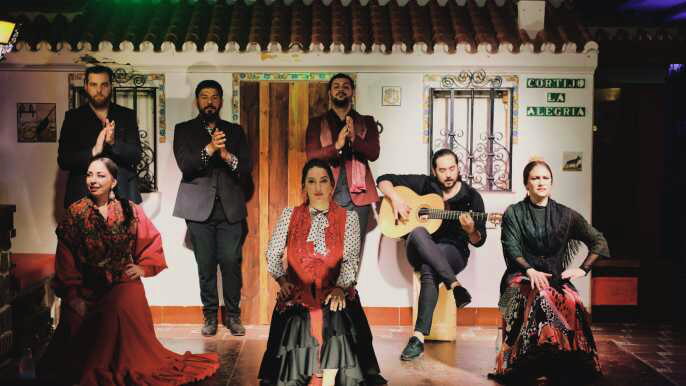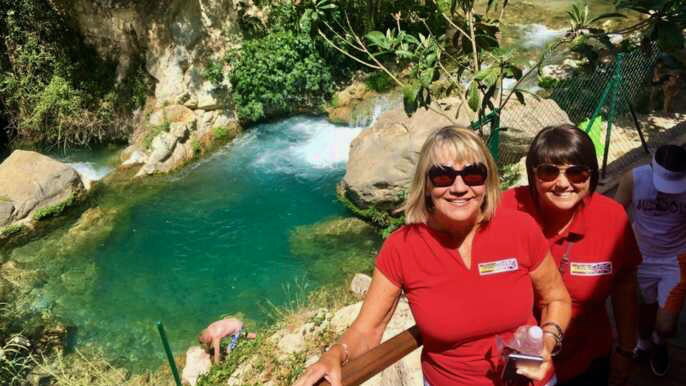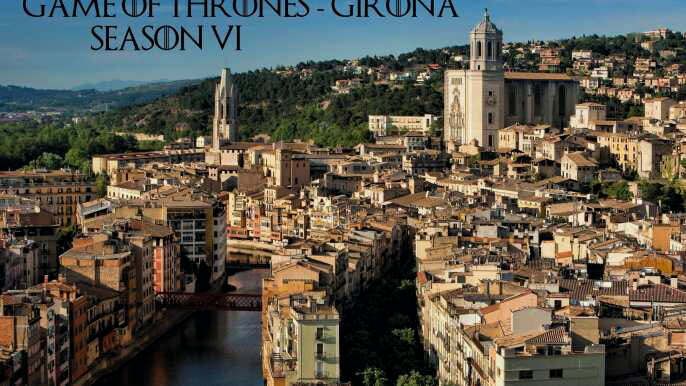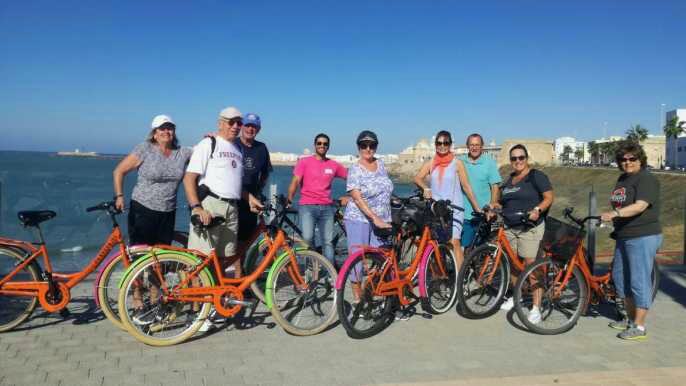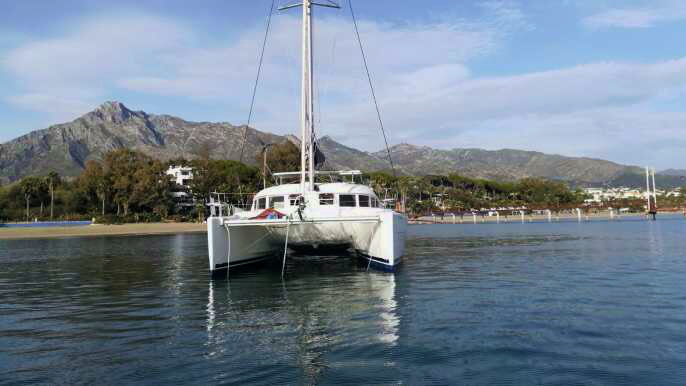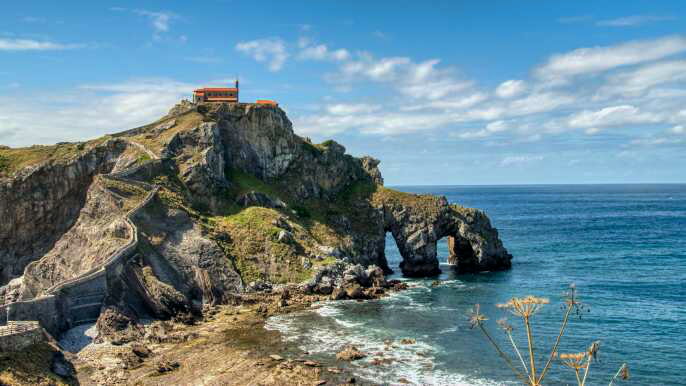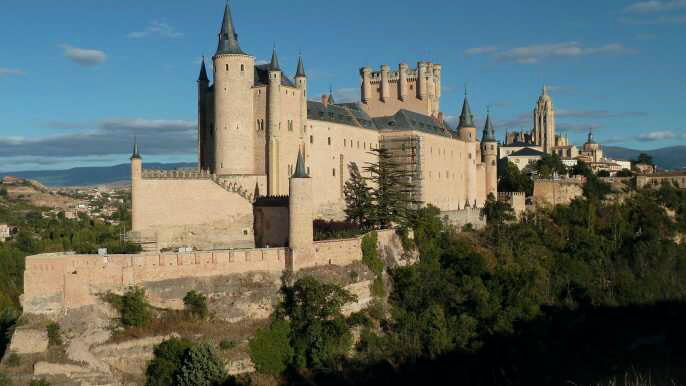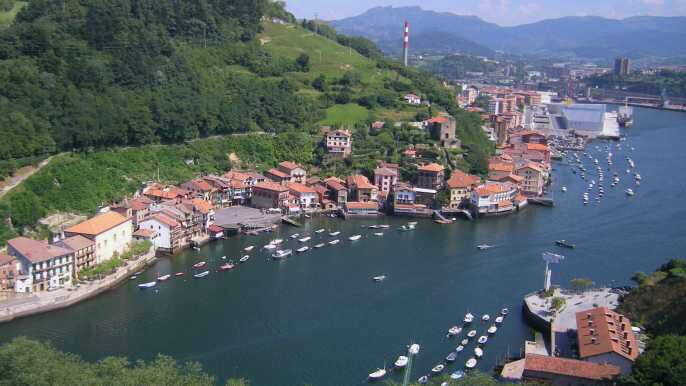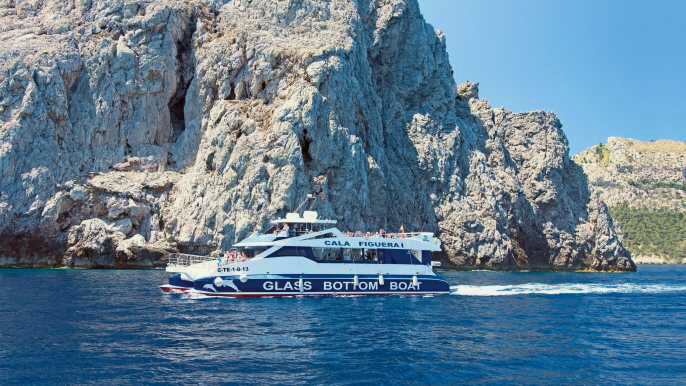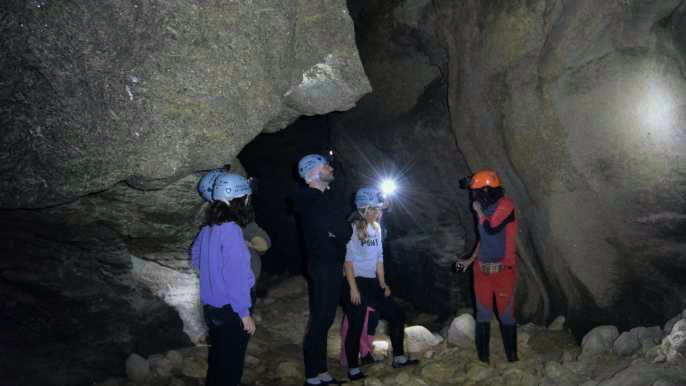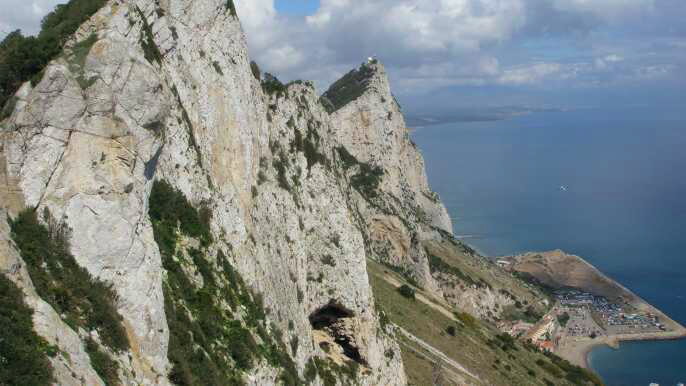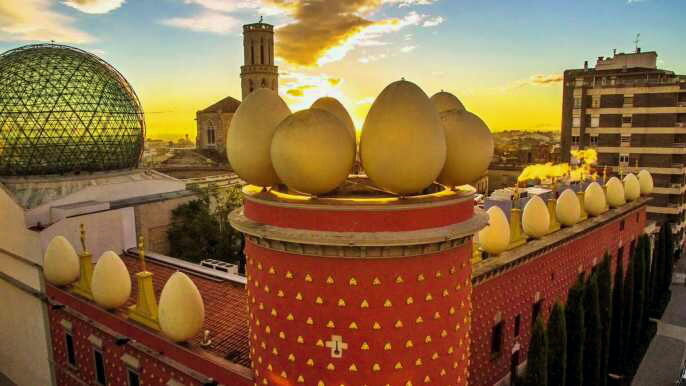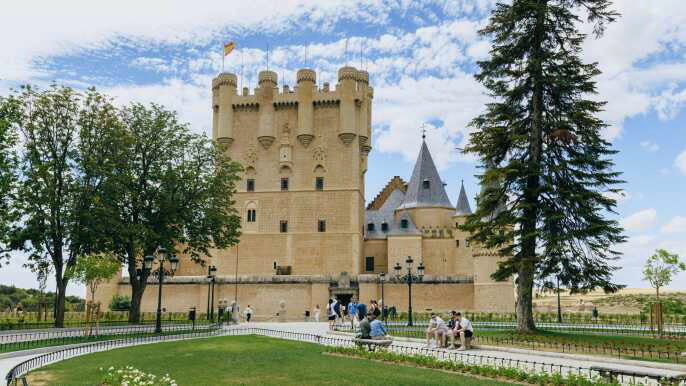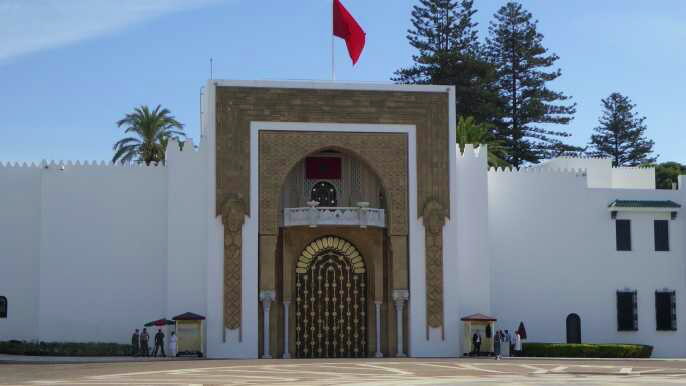Located in the Castile and León region of Spain, Segovia is a historic city with a rich architectural legacy. Its Gothic cathedral and medieval walls are among the city's most notable features. The city also has a number of Romanesque churches and a former royal palace.
Alcazar fortress-palace
Located in the historic city of Segovia, the Alcazar fortress-palace is a landmark building that was built in the 12th century. This castle is one of Spain's most popular historic sites and is a UNESCO World Heritage Site. Originally constructed as a fort, it later became a royal palace. The rocky crag on which it stands has provided an impregnable foundation. The walls are filled with scenes of family life of the Catholic Monarchs.
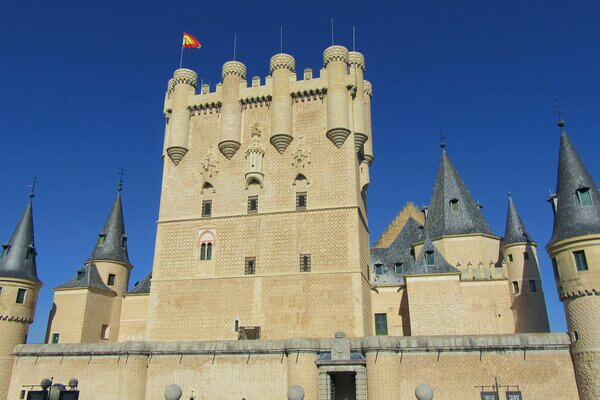
The Alcazar fortress-palace is situated on a rocky crag near the confluence of the rivers Eresma and Clamores. It was originally built as a Roman fortification, and later became the royal palace of a Berber Almoravid dynasty. During the Middle Ages, the Alcazar was the favorite residence of kings of Castile.
The Alcazar is a castle-palace located on a rocky crag in the city of Segovia. This castle has been a military academy, a royal palace, and a state prison. The building also houses a museum and military archive.
Visitors can choose between a full tour and a partial tour. A full tour includes the palace, the artillery museum, and the Tower of Juan II. If visitors want to see the palace, they can make a reservation 48 hours in advance. They will also have to buy a separate ticket for Segovia sightseeing.
The Alcazar has a beautiful exterior. It is also known for its unique blue roof. The interior has a rich history, and there are many halls and rooms. There is also a museum with weapons and maps that depict the battles that took place in this castle.
If visitors want to learn more about the history of this castle, they can purchase an Alcazar tour. The tours last from 45 to 60 minutes. Purchasing tickets from the Alcazar requires a queue, so be sure to plan ahead.
Aqueduct
Located in the town of Segovia in Spain, the Aqueduct is one of the most important architectural landmarks in the city. Located on a Roman structure, the aqueduct is considered to be one of the most intact aqueducts in Europe.
The Aqueduct was constructed by the Romans in the 2nd century BC and is still standing today. It is one of the most famous civil engineering feats in the world. In addition, the Aqueduct was inscribed on the UNESCO World Heritage list in 1985.
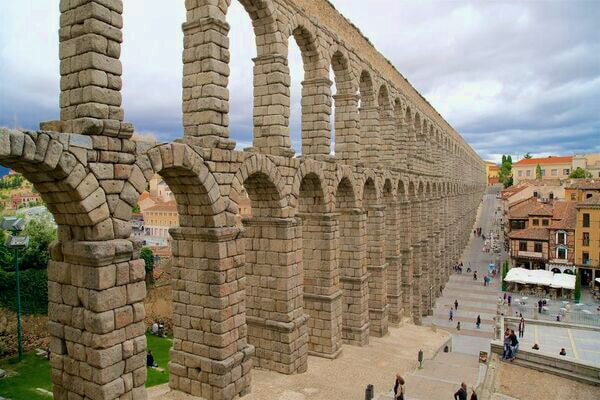
The Aqueduct has been preserved since Roman times and has been repaired several times over the centuries. In the 16th century, statues were placed on the aqueduct. This was due to a major building boom in Segovia.
The Aqueduct Interpretation Centre is a modern interactive space where visitors can learn about the history of the aqueduct. This UNESCO World Heritage Site guides visitors through 15 km of the world's most intact Roman aqueduct.
Segovia's Old Town is an outstanding example of coexistence between different cultural groups. This ancient town is located on a rocky bluff delineated by confluences of the Eresma and Clamores rivers.
The town is surrounded by walls which date back to the 11th century. A notable feature of the city is the Segovia Gate, which is easy to locate from the main streets.
The city's Jewish Quarter is a fascinating area. The Main Synagogue is well preserved. The area was once the richest part of the city, but was closed off in 1481 to convert the Jewish community to Christianity.
The Aqueduct of Segovia is not only a landmark for the city, but is one of the most famous civil engineering feats of all time. It is one of the reasons that Segovia was listed as a UNESCO World Heritage Site.
Church of San Esteban de Segovia
Whether you're a history buff or simply a tourist, Segovia has plenty to offer. Located on a rocky hilltop, this medieval city offers beautiful views and rich cultural heritage. The city's historic walled city features cobblestone streets, medieval alleys, and artisan boutiques.
One of the most beautiful places in Segovia is the church of San Esteban. It's located in the Old Town, which has been designated as a UNESCO World Heritage site. The church is home to a Romanesque bell tower that was once a Moorish temple. Its interior features a wonderful Romanesque Christ.
The church also maintains tombs, capitals, and an original floor. The church was originally built in the 12th century. The ante-sacristy features a Gothic doorway.
Another beautiful church in Segovia is Iglesia de San Millan. Its three naves are typical of Romanesque churches. The church is located in the old Moorish quarter, which is marked by Islamic influence. The church has a great view of the Old Town.
The church of San Esteban also has a rich history. The church was built on an old hermitage. In 1410, the church was converted into a convent of the Corpus Christi. Its Romanesque apse has beautiful frescoes. The church also maintains a tomb of Andres Laguna, a doctor for Julius III.
The Church of the True Cross was built in the early 13th century. It was believed to have been built by the Knights Templar. It has a stunning view of the city, and offers a pleasant walk from town.
Segovia's Alcazar is one of the most iconic buildings in the city. It is built on the hilltop and has beautiful soaring towers and high walls. The Alcazar offers tours, and visitors can explore the whole structure. A museum is also available. A ticket costs 5EUR.
Murallas de Segovia
Located in Spain, Segovia is a picturesque city with an interesting history. It has many ancient monuments to explore. The city's Old Town is a UNESCO World Heritage site. There are numerous monuments to see, as well as some great cafes and shopping options.
Segovia Cathedral is one of the most popular places to visit in Segovia. This Gothic cathedral is massive and boasts a 328-foot tower. The interior features a 14th-century Gothic crucifix and Mudejar art. The Cathedral also offers guided tours.
Another popular Segovia attraction is the Roman Aqueduct. This water channel was built in the first century AD and is still in use. It's located in the Plaza del Azoguejo in the city center. You can walk along it and enjoy some beautiful views of the city.
If you want to see more of Segovia, you can also visit the medieval walled town. The city's walls were built in the 11th and 12th centuries. The walls have undergone a number of renovations. Today, the walls are in good condition. They are 2.5 m thick and average 3.5 m high.
The city's Jewish Quarter is another interesting place to visit. It was a Jewish neighborhood in the past, but was demolished in the 15th century during a violent anti-Jewish movement. Today, it's a quaint street with a few old synagogues. You can also check out the Gastronomic Museum of Segovia for some of the traditional food products of the region.
If you're looking for a place to eat, check out the Segovia Cafe. The restaurant is located near the aqueduct, but it's a little more expensive than other restaurants in the city. The menu includes traditional Spanish dishes.
Jewish Quarter
Located in Segovia's Old Town, the Jewish Quarter is a unique area of the city. It was once a wealthy area, and it has preserved its medieval and Sephardic history. There are three synagogues and a museum.
One of the most well-preserved synagogues in Segovia is the Old "Sinagoga Mayor." It was built in the 13th century. In 1410, the synagogue was converted into a convent of Corpus Christi. The church is surrounded by remnants of its original decor. It is open daily from 9:30am until 7:30pm.
Another church worth visiting is the Iglesia de la Vera Cruz. This Romanesque church is one of the best-preserved churches in Europe. It was built in the early 13th century in the style of the Holy Sepulcher in Jerusalem. It has an exterior that is similar to other Romanesque churches. The interior features a crusader flag in the nave.
There is also a Jewish teaching center located within Segovia's city walls. This center aims to teach the history of the Jewish community in the area. The center is free on Thursdays. It is located on Calle Juderia Vieja.
Another great option for visitors is to visit the Museo de Segovia, which is a museum of archeology. The museum is also open on Saturdays and Tuesdays. The museum features exhibits that highlight the history of Segovia. The museum also features remains of its Roman origins.
Lastly, you should also visit the Cathedral of Segovia. This 16th-century Gothic cathedral is also known as the "Lady of the Cathedrals." It features fantastic stained glass windows. It also has a tower from the previous Moorish building. The cathedral also has 18 chapels dating from the 16th century.



